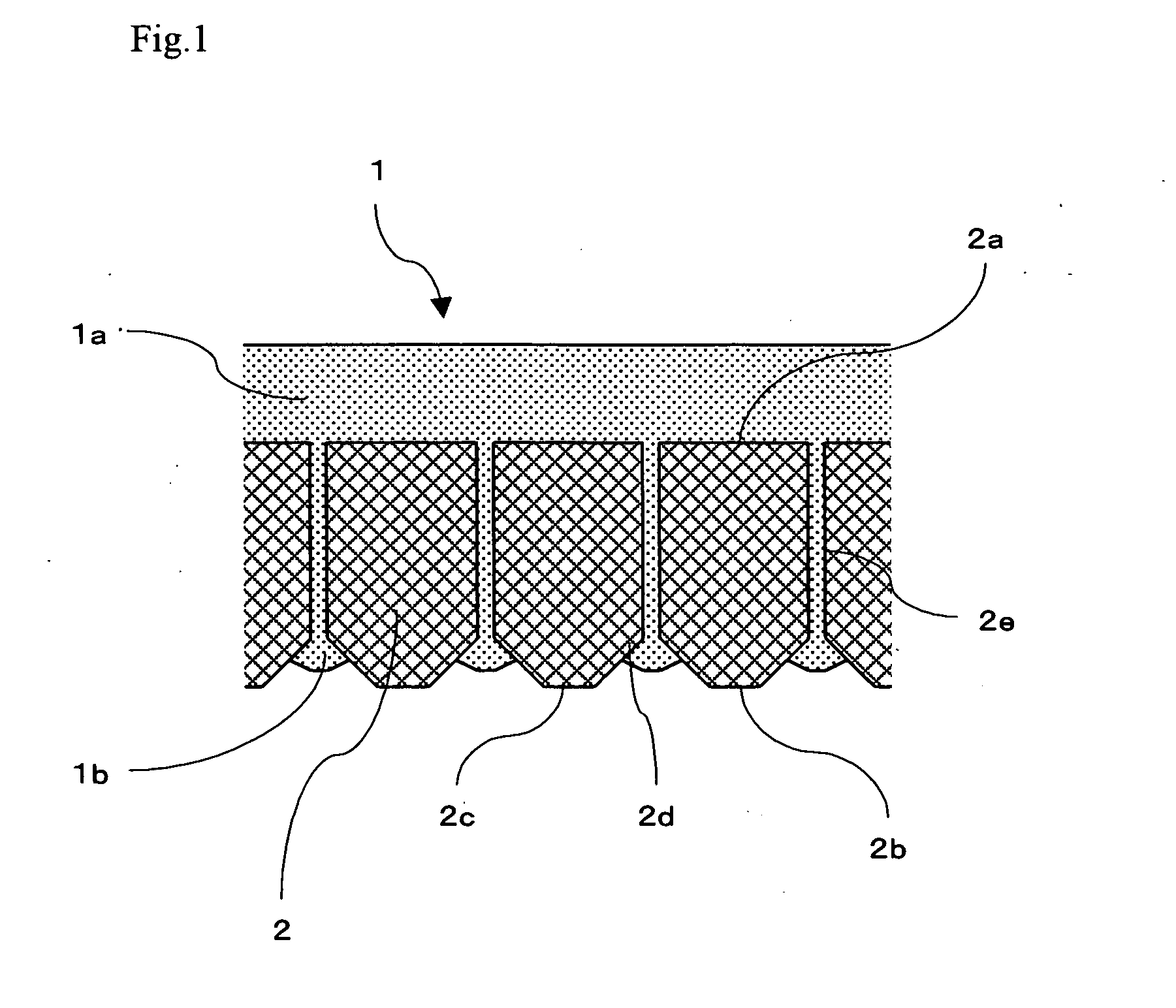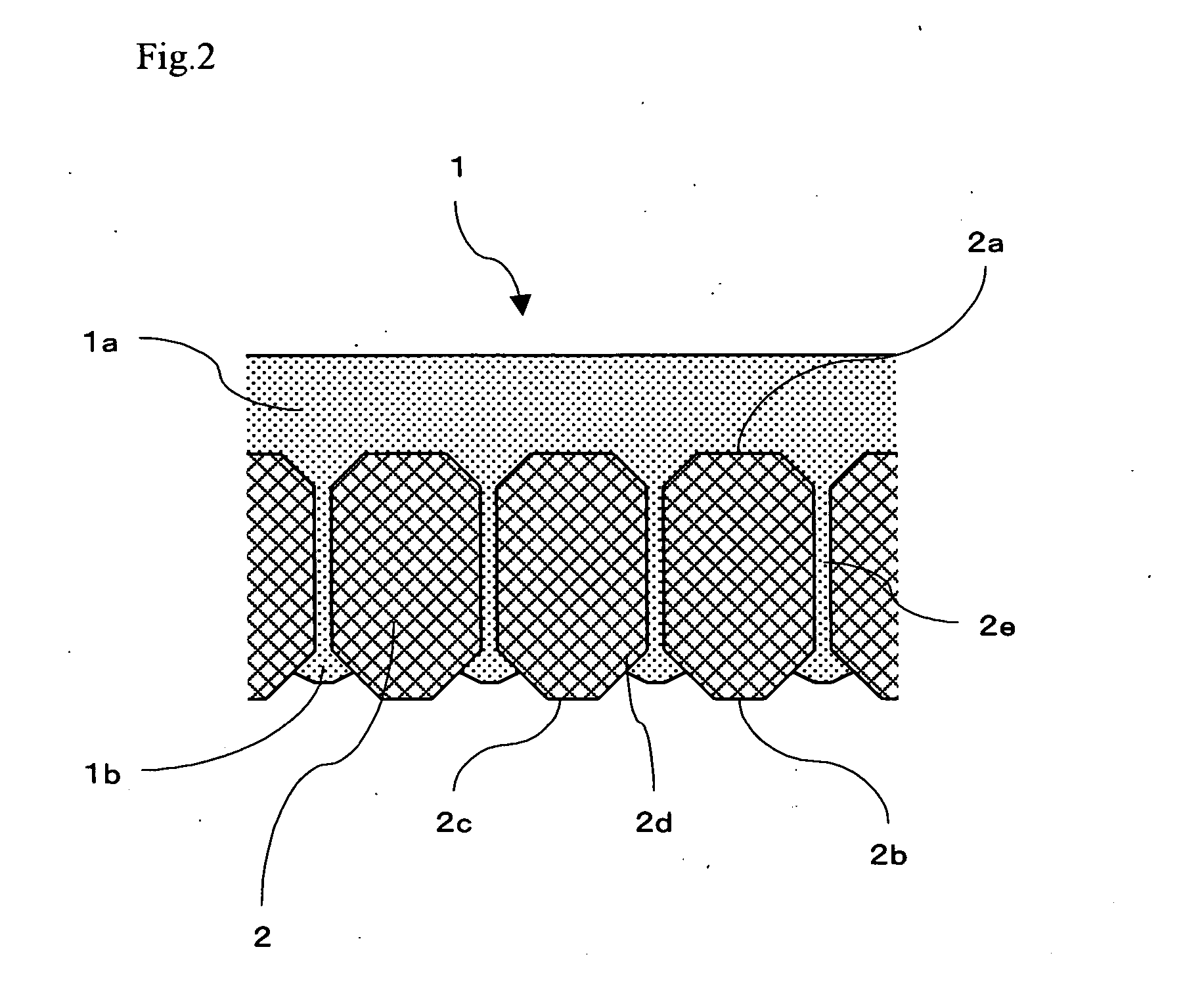Separation membrane
a technology of separation membrane and membrane layer, applied in the field of separation membrane, can solve the problems of defect formation, low separation/removal performance, and prone to peeling of functional films, and achieve the effect of small thickness
- Summary
- Abstract
- Description
- Claims
- Application Information
AI Technical Summary
Benefits of technology
Problems solved by technology
Method used
Image
Examples
example 1
[0051] A porous support was prepared by the following procedure: a sheet of polyester non-woven fabric (a basis weight of 60 g / m2, a thickness of 80 μm, and a width of 250 mm) was calendered in such a manner that the temperature of a rear roll was less than that of a front roll, whereby the smoothness of a front surface of the sheet was adjusted to 21 s and the smoothness of a rear surface of the sheet was adjusted to 7 s. Polysulfone (Udel (registered trade mark) P-3500 manufactured by Solvay Advanced Polymers KK) was used for forming a functional film for separation. The polysulfone was dissolved in dimethylformamide, whereby a polysulfone solution (a concentration of 16 percent by weight and a temperature of 20° C.) was prepared and used for forming the film. The solution was applied onto the front surface of the non-woven fabric sheet, whereby a coating having a width of 200 mm and a thickness of 200 μm was formed. In the above operation, drums were arranged under the rear surfa...
example 2
[0054] A separation membrane (a thickness of 175 μm) was prepared in the same manner as that described in Example 1 except that a porous support was prepared by the following procedure: a sheet of polyester non-woven fabric (a basis weight of 84 g / m2, a thickness of 95 μm, and a width of 250 mm) was calendered in such a manner that the temperature of a rear roll is less than that of a front roll, whereby the smoothness of a front surface of the sheet was adjusted to 20 s and the smoothness of a rear surface of the sheet was adjusted to 16 s.
[0055] After the polysulfone layer was formed, it was observed that the drums are not soiled with the solution at all. There were a slight number of visible defects on the front surface of the coiled separation membrane; however, such defects seemed unlikely to cause problems in practical use. A cross section of the separation membrane was observed with an optical microscope, and the observation showed that the rear surface of the non-woven fabr...
example 3
[0056] A separation membrane (a thickness of 130 μn) was prepared in the same manner as that described in Example 1 except that a porous support was prepared by the following procedure: a sheet of polyester non-woven fabric (a basis weight of 65 g / m2, a thickness of 72 μm, and a width of 250 mm as shown in FIG. 5) was calendered in such a manner that the temperature of a rear roll is less than that of a front roll, whereby the average density of a front region of the sheet was adjusted to 69% and that of a rear region of the sheet was adjusted to 45%, that is, the average density of the rear region was adjusted to 66% of that of the front region. The front surface of the polyester non-woven fabric sheet had a smoothness of 10 s and the rear surface had a smoothness of 5 s.
[0057] After the polysulfone layer was formed, it was observed that the drums are not soiled with the solution at all. There were no visible defects on the front surface of the coiled separation membrane, that is,...
PUM
 Login to View More
Login to View More Abstract
Description
Claims
Application Information
 Login to View More
Login to View More - R&D
- Intellectual Property
- Life Sciences
- Materials
- Tech Scout
- Unparalleled Data Quality
- Higher Quality Content
- 60% Fewer Hallucinations
Browse by: Latest US Patents, China's latest patents, Technical Efficacy Thesaurus, Application Domain, Technology Topic, Popular Technical Reports.
© 2025 PatSnap. All rights reserved.Legal|Privacy policy|Modern Slavery Act Transparency Statement|Sitemap|About US| Contact US: help@patsnap.com



